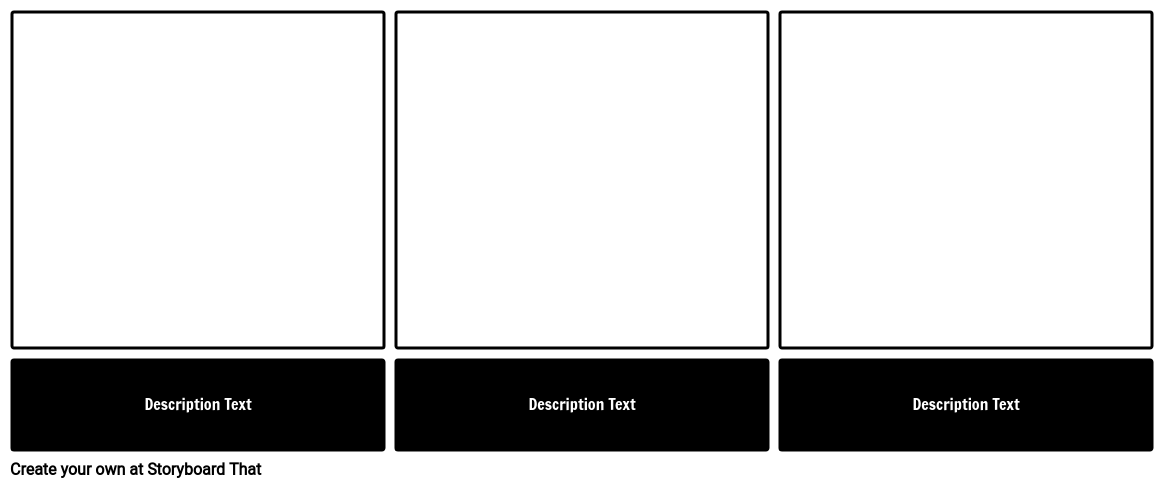Activity Overview
Use Storyboard That to get students thinking about stories. Give them a prompt to work with, or start a storyboard for them to finish. There are many amazing scenes and characters on Storyboard That to stir up imagination! The prompt for the example below is: “The snow kept coming down…”
Depending on the level of your students, you may want to enforce a narrative arc, or you may just want the story to make sense sequentially. This particular activity is good for expanding “quick write” ideas, or boiling down a story idea to its major points. It is also good to get stuck students started. Present several finished stories to see the different directions students took!
Stick with eight cells or less to avoid long and complicated stories. A fun, but challenging, alternative would be to have one student or one group complete one cell of the storyboard, and then pass the storyboard on. Similar to passing a story stick or writing a class story, this will challenge students to make sense of the previous cells and channel their creativity!
Template and Class Instructions
(These instructions are completely customizable. After clicking "Copy Activity", update the instructions on the Edit Tab of the assignment.)
Student Instructions
Create a story! Use the starting prompt, "The snow kept coming down!", or use a prompt from your imagination.
- Click "Start Assignment".
- Use the description boxes and dialogue to tell your story.
- Create illustrations for each part using all the fun scenes, characters, and items!
- Save and Exit
Lesson Plan Reference
Rubric
(You can also create your own on Quick Rubric.)
| Proficient | Emerging | Beginning | |
|---|---|---|---|
| Events | Each of the cells represents a different part of the story. The cells are in order from beginning to end. | One cell is out of order, or the storyboard is missing important information. | Important information is missing and/or two or more cells are out of order. |
| Images | Cells include images that accurately show events in the story and do not get in the way of understanding. | Most images show the events of the story, but some are incorrect. | The images are unclear or do not make sense with the story. |
| Descriptions | Descriptions match the images and show the change over time. | Descriptions do not always match the images or mention the importance of the event. | Descriptions are missing or do not match the images. |
| Spelling and Grammar | Spelling and grammar is mostly accurate. Mistakes do not get in the way of understanding. | Spelling is very inaccurate and hinders full understanding. | Text is very difficult to understand. |
Activity Overview
Use Storyboard That to get students thinking about stories. Give them a prompt to work with, or start a storyboard for them to finish. There are many amazing scenes and characters on Storyboard That to stir up imagination! The prompt for the example below is: “The snow kept coming down…”
Depending on the level of your students, you may want to enforce a narrative arc, or you may just want the story to make sense sequentially. This particular activity is good for expanding “quick write” ideas, or boiling down a story idea to its major points. It is also good to get stuck students started. Present several finished stories to see the different directions students took!
Stick with eight cells or less to avoid long and complicated stories. A fun, but challenging, alternative would be to have one student or one group complete one cell of the storyboard, and then pass the storyboard on. Similar to passing a story stick or writing a class story, this will challenge students to make sense of the previous cells and channel their creativity!
Template and Class Instructions
(These instructions are completely customizable. After clicking "Copy Activity", update the instructions on the Edit Tab of the assignment.)
Student Instructions
Create a story! Use the starting prompt, "The snow kept coming down!", or use a prompt from your imagination.
- Click "Start Assignment".
- Use the description boxes and dialogue to tell your story.
- Create illustrations for each part using all the fun scenes, characters, and items!
- Save and Exit
Lesson Plan Reference
Rubric
(You can also create your own on Quick Rubric.)
| Proficient | Emerging | Beginning | |
|---|---|---|---|
| Events | Each of the cells represents a different part of the story. The cells are in order from beginning to end. | One cell is out of order, or the storyboard is missing important information. | Important information is missing and/or two or more cells are out of order. |
| Images | Cells include images that accurately show events in the story and do not get in the way of understanding. | Most images show the events of the story, but some are incorrect. | The images are unclear or do not make sense with the story. |
| Descriptions | Descriptions match the images and show the change over time. | Descriptions do not always match the images or mention the importance of the event. | Descriptions are missing or do not match the images. |
| Spelling and Grammar | Spelling and grammar is mostly accurate. Mistakes do not get in the way of understanding. | Spelling is very inaccurate and hinders full understanding. | Text is very difficult to understand. |
More Storyboard That Activities
Winter Holiday Classroom Activities
This Activity is Part of Many Teacher Guides
Pricing for Schools & Districts
© 2024 - Clever Prototypes, LLC - All rights reserved.
StoryboardThat is a trademark of Clever Prototypes, LLC, and Registered in U.S. Patent and Trademark Office




![Winter Holiday Classroom Activities - The Story of [Insert Holiday Here] Winter Holiday Classroom Activities - The Story of [Insert Holiday Here]](http://cdn.storyboardthat.com/storyboard-cells/5496923/cell-col-2-row-1-w400.png)






